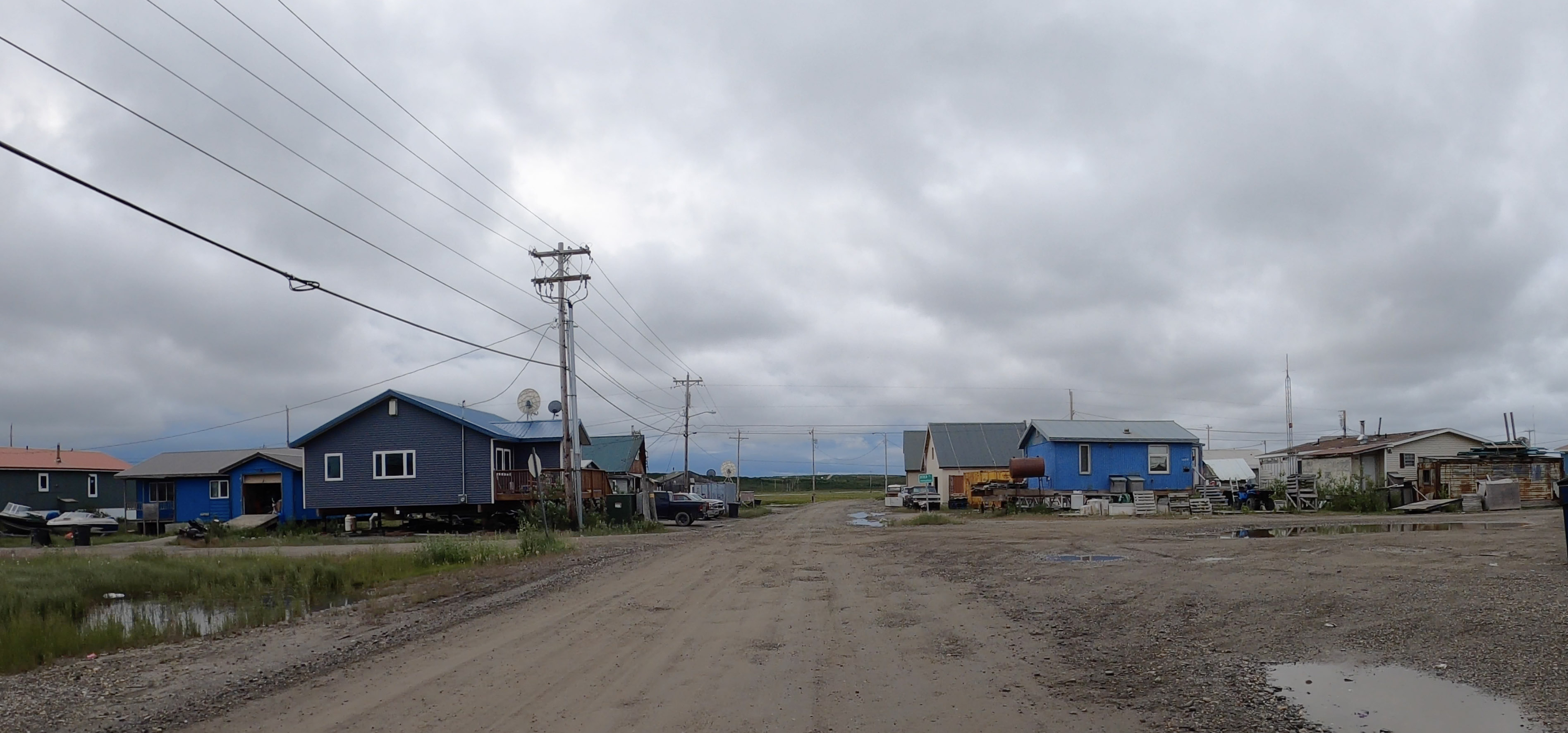Study aims to reduce fuel oil use in remote Arctic
Amanda Byrd
907-978-0305
July 29, 2022

Researchers will investigate whether excess renewable energy can power electric thermal storage heaters in Kotzebue homes like these, reducing the diesel fuel used for space heating.
Researchers will study whether heaters that store renewable electric energy might substantially reduce fuel oil burned in remote Arctic homes, under a new project led by a University of AVŔÇÂŰĚł Fairbanks team.
Curtailing fuel oil use in this way, along with energy efficiency improvements, could cut household energy costs and carbon emissions.
“Heating is a huge expense in AVŔÇÂŰĚł, and we cannot afford to design electric power systems without considering how they can be co-optimized to serve heating needs,” said Jeremy VanderMeer, a research assistant professor at UAF’s AVŔÇÂŰĚł Center for Energy and Power.
The UAF team will conduct energy-efficiency retrofits and install electric thermal storage heaters in homes in Kotzebue, AVŔÇÂŰĚł, to assess their impacts on home energy use and costs.
Electric thermal storage heaters consist of a heating element and ceramic bricks in an insulated box. On demand, a fan blows air across the hot bricks and into the home.
Some electrical microgrids in remote AVŔÇÂŰĚł communities use renewable energy, such as that generated by wind turbines. When excess renewably generated electricity is available, it can be dispatched to charge electric thermal storage heaters and sold at a discounted rate, thereby reducing heating costs.
In this way, electric thermal storage heaters can buffer fluctuations in renewable generation and allow utilities to increase such sources in their microgrids.
So thermal storage, combined with improved home energy efficiency, could make the addition of renewable generation capacity the most cost-effective way to reduce fuel consumption.
“The broadscale adoption of a cost-effective combination of energy-efficient homes and low-cost, renewably generated electricity for space heating would be transformative, as it would substantially reduce residential sector carbon emissions and household energy costs,” said Dominique Pride, a research assistant professor of economics at ACEP and the lead researcher on the project.
The team will model Kotzebue’s microgrid to determine the most cost-effective combinations of energy efficiency retrofits, electric thermal storage heaters, electrical energy storage and renewable energy.
The team members will also analyze economics and policies to identify changes required to enable the widespread adoption of renewably generated electricity for space heating. They’ll study how statewide energy policies and programs can be adapted to be more equitable and effective.
Once the energy system model is developed, the team will teach Arctic residents how to apply it to reduce fuel oil consumption in communities beyond Kotzebue.
The team members will create a culturally responsive, place-based science curriculum on energy use in the Arctic for grades K-8. They’ll also provide energy efficiency and energy auditing training to high school students.
“We’re excited to accurately measure and document how resourceful people, energy-efficient buildings, and renewable electricity can all work together to cut costs and carbon emissions in remote communities,” said Steve Colt, a research professor of energy economics and policy at the ACEP.
The National Science Foundation funded the four-year project with a $3 million grant from its Navigating the New Arctic program.
020-23


